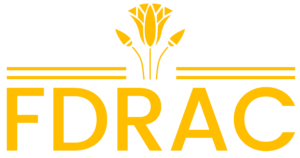
FDRAC provides comprehensive services for medical device registration in Saudi Arabia. The company’s registration team boasts deep expertise and specialized knowledge, ensuring full compliance with regulatory and health standards. In addition to registration, FDRAC offers storage and inventory management solutions, providing clients with flexibility and efficiency in handling their medical products.
FDRAC plays a crucial role in facilitating the medical device registration process and ensuring compliance with standards, contributing to the enhancement of the quality and safety of medical products available in the Saudi market.
Registration Process of Medical Device in
Saudi arabia
To market medical devices in Saudi Arabia efficiently and safely, manufacturers and importers must apply for a Medical Device Marketing Authorization (MDMA) from the Saudi Food and Drug Authority (SFDA) before they begin importing and distributing their products.
Step 1: Licensing
Before starting the registration process, companies must obtain a facility license from the SFDA. This license authorizes them to import and market their products in the Saudi market.
Step 2: Appointing a Legal Representative
Appointing an authorized legal representative in Saudi Arabia is a crucial step before registering any medical device with the SFDA. Manufacturers must designate a representative who will be responsible for ensuring the safety, efficacy, and quality of the marketed medical devices. Companies can choose a local distributor or an independent consulting firm as their representative.
Step 3: Registering the Medical Device
After obtaining the necessary licenses, companies can begin the process of registering their medical devices with the SFDA. This registration requires detailed information about each product, including its components, intended uses, and proof of its safety and effectiveness.
Step 4: Compliance with Standards and Regulations
Registered products must comply with the standards and regulations set by the SFDA’s medical device and equipment system, ensuring that products meet health and quality specifications. These products must undergo rigorous testing to confirm their safety and efficacy before being introduced to the market.
Step 5: Monitoring and Tracking
Following registration, the SFDA conducts periodic monitoring to ensure ongoing compliance with approved standards. This includes tracking batches, reviewing complaints and reports from consumers and professionals, and ensuring that products continue to meet the specified criteria.
GHAD Electronic Platform
To streamline and facilitate the medical device registration process, the “GHAD” electronic platform offers a comprehensive system for managing device registration from licensing to distribution. The GHAD system enables local companies and manufacturers in Saudi Arabia to obtain necessary licenses, renew them, and apply for modifications and updates, ensuring continuous adherence to regulations.
Requirements for Medical Device Registration
To register medical devices, companies must apply for an MDMA from the SFDA and provide the following documents:
- Product Labels: Contains detailed information about the medical device.
- Declaration of Conformity: Confirms the device’s adherence to legal and technical standards.
- Instructions for Use (IFU): Provides user safety guidelines.
- Brochure/Marketing Materials: Includes information about the device.
- CE Certificate: Verifies compliance with European safety requirements.
- Quality Management System (QMS): Must comply with ISO 13485.
- Audit Report: Contains results from quality audits.
- Specific Data: As required by the SFDA.
The requirements for medical device registration depend on the type of device, its risk level, and its intended use.
Technical File for a Medical Device
The technical file is a comprehensive document that includes all relevant details about the medical device and consists of:
- Table of Contents: Provides an overview of the file’s contents.
- Clinical Evaluation Report (CER): Summarizes the clinical evaluation of the device.
- Biological Evaluation Reports: Analyzes the device’s biological effects and biocompatibility testing results.
- Post-Market Surveillance Plan and Report (PMS): Documents post-marketing activities and results.
- Post-Market Clinical Follow-up Plan and Report (PMCF): Analyzes clinical data collected after the device’s market launch.
- Risk Management File (RMF): Identifies potential risks and outlines how they are managed.
- Risk Classification Criteria and Rationale: Shows how the device is classified based on identified risk levels.
The SFDA may request additional information or documents for the registration of a medical device based on their assessment of the technical file provided.
FDRAC’s Medical Device Registration Services
FDRAC provides comprehensive services for medical device registration in Saudi Arabia. The company’s registration team boasts deep expertise and specialized knowledge, ensuring full compliance with regulatory and health standards. In addition to registration, FDRAC offers storage and inventory management solutions, providing clients with flexibility and efficiency in handling their medical products.
FDRAC plays a crucial role in facilitating the medical device registration process and ensuring compliance with standards, contributing to the enhancement of the quality and safety of medical products available in the Saudi market.

